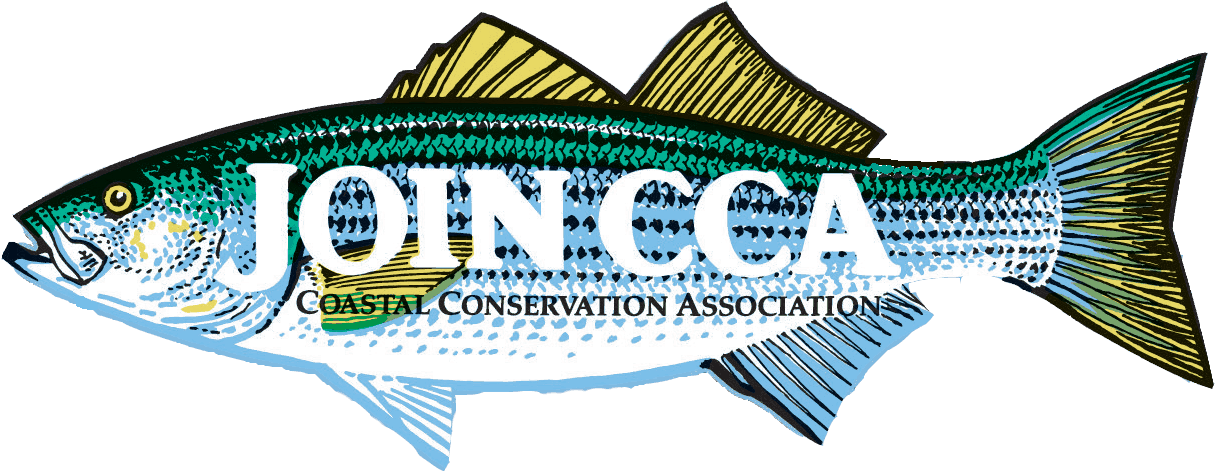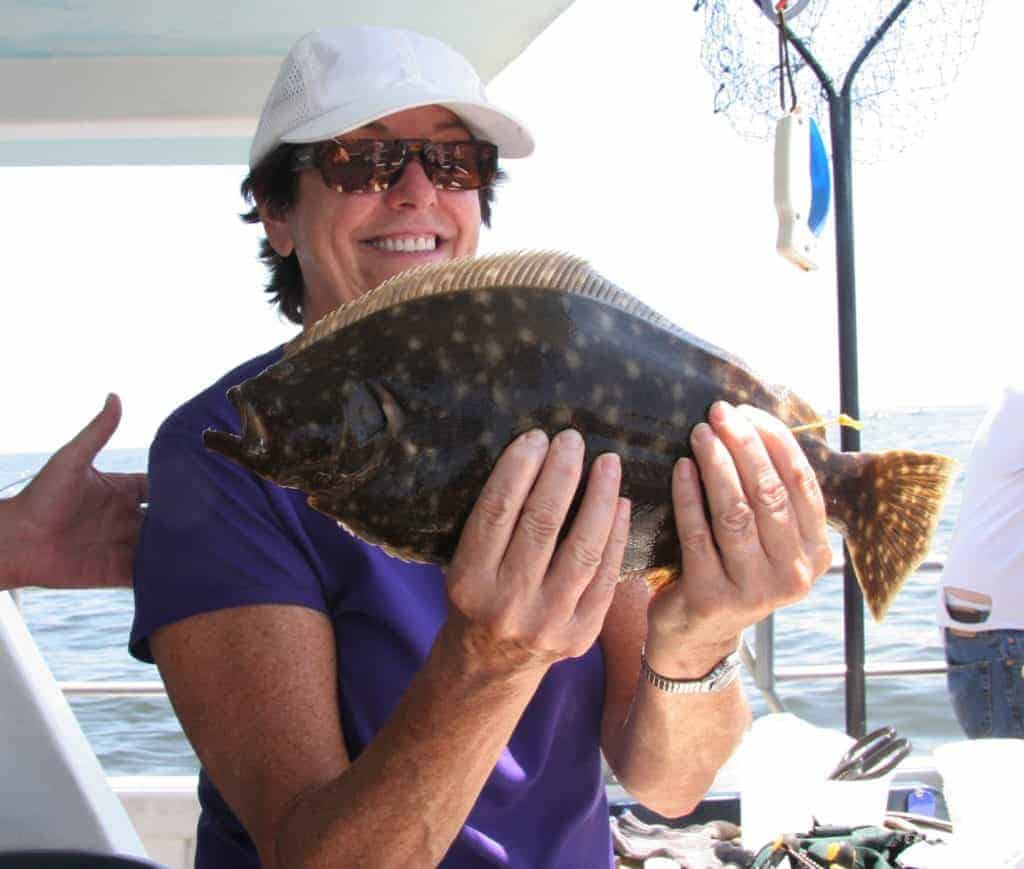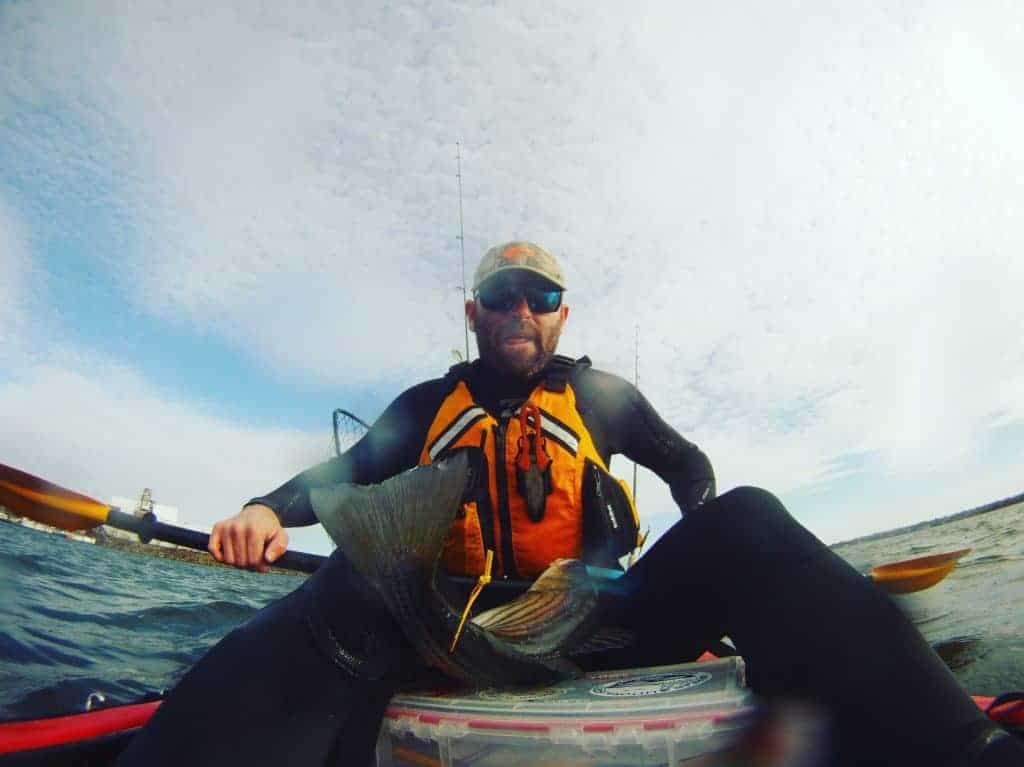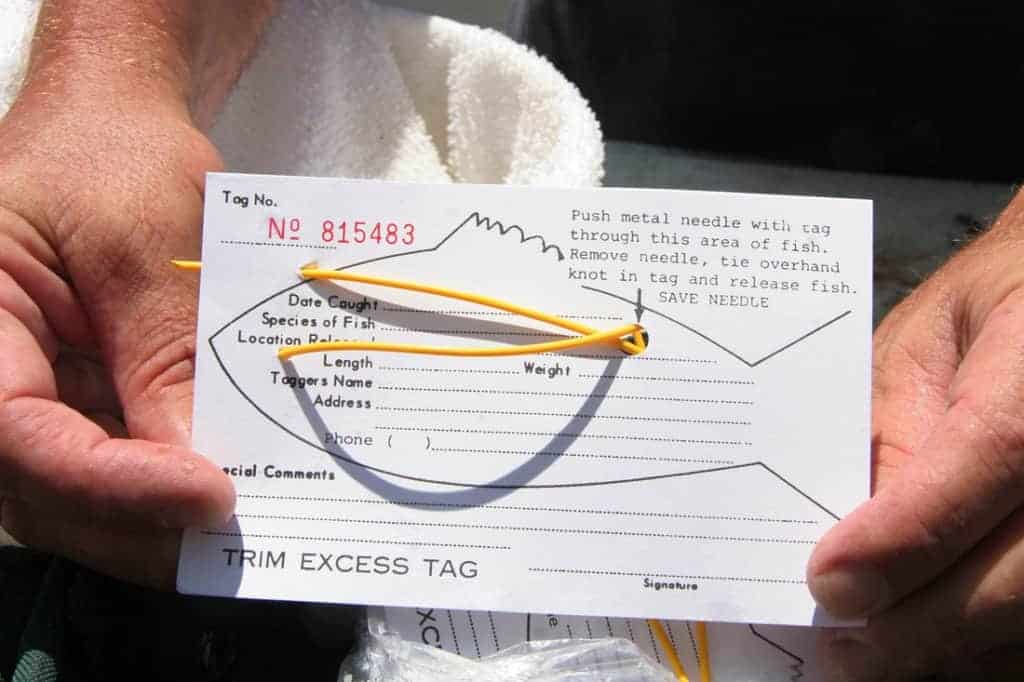2021 Update: Earlier this year, Jeff Dement, the long time tagging director for the American Littoral Society passed away. Please find further information about Jeff's positive impact on conservation and our fisheries here.
At this time, the American Littoral Society is working on their plans for the future of this important program, and CCA Maryland staff and volunteers are working with them to advance this program into the future. Current orders should be fulfilled as expected, but please recognize that delays may exist at this time.
ATTENTION: Increased air and water temperatures are a MAJOR contribution to catch and release mortality for striped bass. Find out more from this MD DNR STUDY. We ask that you refrain from tagging fish when the air temperature is above 95 degrees.
CCA Maryland is proud to partner with the American Littoral Society (ALS) to join their long standing and and highly successful fish tagging program.
Since its inception in 1965, volunteers of ALS’s Fish Tagging Program have tagged more than 640,000 fish. Headquartered in Sandy Hook, NJ, ALS and its citizen-science participants have provided data critical to the development of fisheries management plans by the Atlantic States Marine Fisheries Commission (ASMFC) and the National Marine Fisheries Service (NMFS).
With the Chesapeake Bay and its tributaries serving as the primary spawning grounds and nursery area for 70-90% of the Atlantic striped bass stock 1, CCA Maryland members are uniquely poised to contribute to citizen-science efforts to improve data for fisheries management on the local, state, and regional level.
Whether fluctuations in the health of the Atlantic striped bass stock are due to anthropogenic (human) or naturogenic (natural) causes, effective fisheries management practices for the stock require widespread data collection.
The tagging of fish is a widely accepted tool to better understand migratory patterns, growth rates, mortality and more.
All of the tagging data captured by this program are transferred to the database of the NMFS Laboratory in Woods Hole, MA.
CCA Maryland's program will capture data in addition to that of the standard ALS tag report card . We ask that members apply the custom CCA Maryland labels to the lower lefthand corner of the tag report card upon receipt of their tag orders.
While striped bass are arguably the most popular fish in Maryland and the focus of this program at this time, the existing ALS program also focuses on summer flounder, bluefish, tautog & black sea bass. Participants in our program may also tag speckled trout, weakfish and red drum.
NO FISH UNDER 12" SHOULD BE TAGGED
TO ENSURE THE SUCCESS OF OUR TAGGING EFFORTS IT IS IMPERATIVE THAT TAGGING PARTICIPANTS TREAT THE FISH WITH EXTREME CARE AND FOLLOW THE BEST PRACTICES AS INSTRUCTED AT THE TAGGING TRAINING SEMINARS & LISTED BELOW
1.)http://dnr.maryland.gov/fisheries/Pages/Fish-Facts.aspx?fishname=Striped%20Bass
Step 1: Become a Member
Sign up, renew, or make sure your CCA Maryland membership is current.
*Please note your CCA membership ID# which can be found on your membership card or on the address label of your TIDE magazine.


Step 2: Attend a Tagging Training Seminar
Step 3: Order Supplies
After attending a seminar, CCA Maryland members may order their tagging supplies via the CCA Maryland website. All supplies are provided by ALS directly to your door.
Orders will not be fulfilled unless you have attended a tagging seminar

Step 4: Go Fishing & Tag Fish
To ensure the survive-ability of your catch, follow these best practices, and the best tagging practices as instructed at the seminar.
Did you catch a tagged fish?
Step 5: Turn in Tagging Card
Fill in the necessary information on the tagging card that corresponds to the tag you have applied.
Send to:
American Littoral Society
18 Hartshorne Drive
Suite 1
Highlands, NJ 07732
* It is recommended that you keep records of you tags and/or photo copy your cards before sending.

Best Practices for Handling Fish
When choosing to catch and release your fish, consider taking an extra step, and tagging your fish.
To ensure the survive-ability of your catch, the following best practices should be followed:
- Limit exposure to air as much as possible, especially in the hot summer months. Increased air and water temperatures are a major contribution to catch and release mortality.
- Prepare a wet cool surface for fish during tagging
- Always be prepared with at least one tag loaded in an applicator needle.
- Use a soft wet rag when handling the fish to avoid damage their slime layer.
- Do not hold fish under gill plate
- Place a wet rag over the fishes eyes to calm it down.
- Use a knot-less "conservation series" rubberized net or fish cradle to support the fish and limit handling.
- Keep fish in the water & in the net or cradle when preparing your tags, especially in the summer.
- Take extra time to ensure the fish has recovered before releasing
- BE PATIENT WHEN RELEASING - using a net to release allows the fish to recover when underwater and leave when ready.
- hold by tail and make sure head and gills are in water
- Use a figure 8 motion when reviving and avoid pulling back and forth in water, fish breathe by moving forward not backwards.
